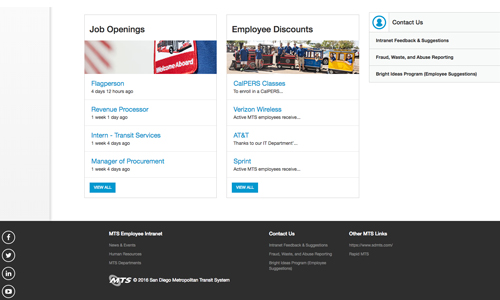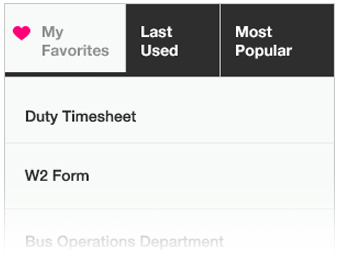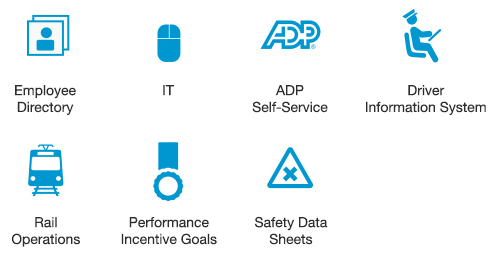You are here
KMD Bus Maintenance
From L to R: KMD Body Shop Mechanic A Darvin Borden, Body Shop Foreman Billy Hoss, Mechanic A’s Lee Won, Jose Monzon, Brian Dean (sitting), Rosalio Espinosa. | Mechanic A Apprentice Daniel Ibarra (left) and Mechanic A Steve Karaginides | Mechanic A Darvin Borden is armored up for a welding project in the KMD body shop | Mechanic A’s Joshua Palechek (left), and Brian Lamb conduct an inspection on a 60-foot Rapid bus
Reliability and safety are two key performance indicators that help create happy and satisfied riders. The success story behind MTS’ high KPIs in these categories begins in MTS maintenance departments.
MTS has two in-house bus divisions complete with full-time maintenance teams, one at the Kearny Mesa Division (KMD) and the other at the Imperial Avenue Division (IAD). This story focuses on KMD, which houses 124 buses. Some of our system’s busiest routes, such as Rapid 235 and Route 41, begin and end their day here.
To adequately maintain these buses for the rigorous daily route schedule, KMD relies on 80 mechanics, (with another 14 in training) to ensure these 40,000-pound vehicles are ready to hit the road for as much as 300 miles a day.
It’s a cohesive group that works well together. “Everyone is paying attention to what the others are doing. If they see someone struggling, they don’t hesitate to help,” said Sergio Perez, KMD Maintenance Foreman.
This selfless work ethic has led to five years in a row of perfect audit scores by the California Highway Patrol. Additionally, the Mean Distance Between Failures performance has improved by 62% over the last two years from 6,197 miles to 10,074 miles between bus breakdowns.
While the miles driven between breakdowns have significantly improved, so has the technology with each new bus that arrives at KMD. The days are gone when someone can take shop classes in high school, then become a mechanic at MTS. The technology is improving with each new series of bus that MTS purchases, making it more complicated and computer science-driven than ever before.
“A bus still has wheels, axles and oil in it,” said Steve Karaginides, a Mechanic A and one of the longest tenured MTS employees at 44 years. “But you can’t stand still with the technological elements. The computer diagnostics help a great deal.”
“The technology bar is constantly moving up,” said Dan FitzGerald, KMD’s maintenance instructor. “This is a young, very smart and motivated group of mechanics. We are constantly challenging them, and they are stepping up.”
We need this type of talent coming up through the ranks. It’s rigorous work to cycle 124 buses through KMD’s maintenance bays. Especially because the division adheres to strict preventative maintenance schedules every 6,000 miles and deeper inspections every 12,000 miles.
While the inspection schedules and job assignments are consistent between MTS’ two in-house maintenance divisions, one major difference about KMD is the body shop. Any time a bus gets damaged and taken out of service, it gets sent to KMD for body work repair.
MTS has nine mechanics dedicated to the body shop. They handle about 140 job assignments per month, whichinclude minor and major accidents repairs, total repaints, driver seat repairs, graffiti removal and much more.
“Regardless of the damage, attention to detail is what we take a lot of pride in,” said Brian Dean, a Mechanic A with 27 years at MTS. “This is what the public sees when the bus pulls up. So things like removing graffiti, waxing, and paint are very important to body work.”
“Sometimes buses will be here for an hour, and some stay for five months,” added Dean. “Buses with severe buckling can take a while. It all depends on the accident and how quickly we can get parts.”
Body shop mechanics get daily job assignments that usually include working on 1, 2, or even three buses. Mechanics first learn about each job by reading the bus operator’s notes for adjustments/repairs. “It’s always different,” said Dean. “What I like about the work is trouble-shooting and finding solutions to problems.”
Sometimes the problems can’t be detected or are hard to find. But the family atmosphere in the auto body shop breeds success. “These guys went to my wedding,” added Dean. “We help each other out. If I get stuck, I don’t hesitate to ask one of these guys for help.”
Maintenance is the behind-the-scenes work that is one of the most important elements to MTS. Passengers may not see all the talent, hard work and pride that KMD mechanics put into every bus. But they appreciate the end results – safe and efficient bus trips.
- There’s a lot work to complete a 12,000 mile inspection check-off sheet!
- General Brake Inspection
- General Lube & Oil Filter Changes
- Total Bus Inspection
- Deep Cleaning
- Wheelchair Mechanics Inspection
- Air Conditioning Inspection
- Radio Inspection
- CNG Tank Inspection
- Valve Adjustments
- Electrical System Inspection
- Final Inspection

 Employee Directory
Employee Directory IT Help Desk
IT Help Desk ADP Self-Service
ADP Self-Service Driver Information System
Driver Information System Bus Operations
Bus Operations Rail Operations
Rail Operations Performance Incentive Program
Performance Incentive Program Safety Data Sheets
Safety Data Sheets







